Debate often arises in motorsports over the definition of a legend, and what constitutes legendary status. Is it the number of wins across a career? National and/or world titles? Is it philanthropic work, contributions to the sport and industry? Overcoming tragedy or adversity? Perhaps it is personal honor, integrity, influence? By any definition-
Wayne Rainey is a legend.
In the span of a decade, Rainey amassed a resume of wins and titles that would cement his status as an icon of motorcycle road racing. He won the AMA National Championship in 1983 and 1987, and claimed the coveted Daytona 200 title in ’87 as well. Rainey moved onto the world stage, capturing the renowned Suzuka 8-Hours endurance race with teammate Kevin Magee in 1988. Rainey then dominated the GP World Championship for three years, sweeping the 500cc premier class from 1990-92. A career-ending and life-altering injury changed everything in 1993, resulting in permanent paralysis from the chest down.
But Wayne Rainey didn’t stay down.
He reinvented himself for the rest of his journey, managing AMA and GP teams, participating in SuperKart racing, and ultimately birthing the dream that would become MotoAmerica.
I had opportunity to sit down with Wayne for a few minutes, at the final round of the MotoAmerica season at Barber Motorsports Park in Birmingham, Alabama. What ensued became a candid, insightful conversation, revealing something of the heart and soul of the man.

Rob- I remember following your racing career back in the day. The Suzuka 8-Hours was impressive! Very few people even know what that is.
Wayne- It’s a bad-@$$ race, for sure! I was racing Gran Prix’s that year, running at the highest level in motorcycle racing, then went and did the Suzuka, and realized I was NOT at the highest level! The Japanese take that race, and only that race, as the number one race they all want to win, and Gran Prix second. It was so exciting to win that.
Rob- I can’t even imagine! At what age were you first introduced to motorcycles? How did you ever catch the riding/racing bug?
Wayne- My father got into soapbox derby, go-cart racing, and then motorcycles. He had a 90cc Yamaha in the mid-60s, and was a tinkerer as well as a rider. I was about 6 years old when I first started riding, on a little Honda Cub. The Cub was kind of tall for a 6-year old, so my dad put a seat right where the fuel tank meets that under bone. Handlebars above me, seat hitting my back, and I was sitting down in it! First time I ever rode it, we were in the garage, and he said, “Keep your foot on the shifter, give it a little gas, and let off the shifter.” I wheelied that thing right into his cabinets! Needless to say, I was a little intimidated, running out of the garage crying! I came back though.
Rob- Indeed you did. When did you first start competing?
WR- I started racing at the age of 9. In Southern California, we had ten different race tracks, and could race seven days a week. A definite hotbed of dirt track racing. We lived 10 miles from Ascot Park, and my dad built bikes to race the Ascot Half-Mile. I’d go with him every Friday night as a young lad, and learned all the riders by name, their numbers, everything about them. I ate, slept, and drank the racing. When I was old enough, I finally got to go do it myself.

Rob- You really cut your teeth in flat track.
Wayne- Yeah, I didn’t do my first road race until 1980, when I was 20 years old. Had never even been on a track before then.
Rob- What attracted you to road racing?
Wayne- I was dirt tracking and Kawasaki wanted to sell KX250 engines to dirt trackers. They had approached Eddie Lawson, asking “Who do you see that we could develop that motor with?” Eddie recommended me, so they reached out to me- “We got this engine, we’d like to build a short track chassis out of it. Will you run it? We’ll buy your tires, pay your gas,…” and I quickly said, “You got a deal!” So we went out and had some success with it, and they soon asked, “Have you ever considered road racing?” I had not, never really been interested in it aside from reading about it in the magazines, so they sent me to the Keith Code’s California Superbike School. I went through the training, progressed pretty quick, and they asked if I wanted to try a race. So I tried it. I ended up winning 15 of my 16 races! They later contacted me again, saying, “There’s an AMA National race in Loudon, New Hampshire. If you can be there in three days, we’ll have a bike waiting for you.” I was going to race in my first pro 250 novice class. A buddy and I drove cross country to the race, still with my dirt track leathers and gear. It rained during the race, and I had never ridden the bike, never ridden on this track, never ridden in the rain, and we won the race by 20 seconds! Next day, Kawasaki showed up at the race track with a contract to race Superbikes for them the next two years.
The first photo was from the 1979 Peoria TT, with Rainey lofting the Shell-Thuet tuned Yamaha twin. Second photo was Rainey’s AMA National road racing debut, astride the factory Kawaski KR250 in Louden NH. Note the same leathers in both photos.
Rob- Do you think your flat track racing experience gave you an edge in any way, when you transitioned to road racing?
Wayne- I think so, and it helped Kenny Roberts before me. Freddie Spencer did it that way too. All the American world champions had a flat track background. The 500cc GP bikes were wicked machines. It took a special style to adapt to them. The Europeans are doing it now, but they weren’t back then. Rossi, Marquez, all those guys, work off-season on dirt track, but we were doing it decades ago. So I’d say it was an easy transition, easy translation of skills. The natural dirt trackers were always the Americans.
Rob- I remember when the grids and the podiums were filled with Americans.
Wayne- We didn’t know how good we had it, did we? Whole front rows would be Americans, podiums would be all Americans,… Now, there’s no one in the world championships, in MotoGP (at time of this interview). We hope to eventually change that.
Rob- There’s been a lot made of your rivalry with Kevin Schwantz. How did that develop? Did something happen, or was it just two fierce competitors battling it out across the years for dominance?
Wayne- Yeah, by that time I guess I was kind of an established guy. Schwantz came along, with a lot of natural talent, and I saw he was going to do whatever it took to beat me. He really raised my game, because I didn’t want him to beat me. We raced each other really hard, much harder than the other guys. I guess we didn’t like each other, because we didn’t like how we were treating each other on the track! We were both determined to beat the other. I like to think I got the best of Kevin every year, but the rivalry certainly made us both better.
Rob- But in the end, there can be only one.
Wayne- People win championships for all kinds of reasons. But the one thing that’s always the same is, the guy with the most points at the end of the season, wins. I was a very consistent guy, was on the podium most of the time, and ultimately, consistency wins championships. And it wasn’t just Kevin I was battling. There was Mick Doohan, Eddie Lawson, a lot of really huge names out there then. Exciting times for racing.
Rob- You raced for Kenny Robert’s teams a number of years, right?
Wob- I ran for him ’88-93, for six years. We had known each other, and I had started hanging out with him a bit, so he put a team together for me to race in Europe. I ran 250cc bikes my first year with him. Really didn’t think I was ready for it, but we did it, and I got to see the future.
Rob- Would you say you really peaked, really took off, under his tutelage? Did he help refine, tune your skills even more?
Wayne- Yes, definitely! Kenny and I really clicked. He had plenty of riders under him who didn’t have the success we had together. I think he saw in me someone who would do everything to get the most out of myself, my team, the machine, so he fostered that environment for me. A lot of my teammates came and went, but there’s no doubt the friendship, relationship we had was special.
Rob- 1984 was a tough year though.
Wayne- Oh, yeah, I hated it that year. We had to push-start the bikes, and often by the time we got started, I was like 20 seconds behind the pace car! So not only was I having to catch and pass the pace car, they usually had no idea some weenie was behind them! And I’d have to listen to Kenny as I was push-starting the bike, yelling, “Push harder, $!&?-head!” (chuckles) But he helped me grow, for sure. Made me a better racer.
Rob- It’s uncomfortable for me to bring up, but I watched footage of your fateful crash at Misano in ’94. A major life change, in every way.
Wayne- Yes it was.
Rob- How did you personally work through that, overcome it, and reinvent yourself?
Wayne- (pauses to reflect) That was 25 years ago, September 5. So it’s not really that long ago, and yet 25 years is a long time. I’d probably now do a few things differently, but here was this 33 year old man, world champion, did everything on my own, then suddenly, I needed help going up a step, or grabbing a cup, or anything. The way you do everyday functions, how you get in and out of the car, or the bathroom and shower, the bed, everything changes. The first thing you see in the morning is that wheelchair, and the last thing you see at night is that wheelchair. So it’s become my legs. You either adapt, or you die.
Rob- Adapt or die- physically, mentally, emotionally, spiritually.
Wayne- It was a very tough time. It took a few years, a lot of mistakes, some deep pockets of grief, but you know, I have a strong faith in the Lord, and that pulled me through, that’s what worked for me.
Rob- You worked through it all, and your faith carried you.
Wayne- I had a 10 month old son at the time, and he only ever knew me in a chair, so I had to be strong for him, had to show him that his dad’s going to be challenged, but everyone is challenged in their own way, every single day. You can whine about it, or pull your pants up like a big boy. It still could get worse too, I don’t know. So I just live every day.
Rob- You’ve accomplished so much in the sport, on and off the track. What are your fondest memories, proudest achievements?
Wayne- I have so many memorable moments, and I’m still creating them. Obviously, being a very successful motorcycle racer, to have been able to make a career out of it. I loved racing motorcycles! I loved the competition, loved the challenge, loved racing at the highest level. I loved every win that I got, loved every 10th place that I got. I remember the battles, the rivalries. So I don’t think any one particular thing sticks out more than others. I just try to be a decent dude, show courtesy to everyone I meet. Now, in my current situation, I try to pay attention to what some people have to go through when they’re physically challenged. I’m sensitive to that.
Rob- To me, what you’ve endured, where you are now, only adds to your mission.
Wayne- Every day we wake up, we have no idea what it holds, where it will take us. Nicky Hayden was a perfect example of that. (died May 22, 2017)
Rob- As I stated in an article I wrote about him after his death- life is fragile, life is fleeting, so live for a higher calling. You’re still making a difference, in racing and beyond.
Wayne- I think you’re right, only because I know what the outcome is now. I didn’t when I was still racing. Won three world championships, on track to win a fourth. Where do you go from there? Some say the only place to go is down, but I didn’t see it that way. I just wanted to keep winning as long as I could, and keep getting better.
Rob- Looking at modern racers like Rossi, Marquez, Jonathan Rea- it doesn’t matter how many they’ve won, the next one is still a thrill for them.
Wayne- Rossi, he’s such a special case. He came up through a different era than I did, but that hunger to win is still there with him. He obviously still has fun doing it.
Rob- How was the dream for MotoAmerica born?
Wayne- My partners, Richard Varner and Terry Kargas, were building a motorcycle and through a mutual friend, asked if I would come help. I was pretty far away from the sport then, but that relationship started me back in the industry, calling my old contacts about parts. This bike had the look of a 1980s road race bike, but in actuality, it was a 2010 Yamaha R1. Back in the sport, I was getting a lot of questions- “What’s going on with American road racing?” I still had a relationship with Dorna (the international sanctioning body), so I started thinking, “There’s not many Americans; maybe I should start a young rider series.” There were only three U.S. Gran Prix races left, and one World Superbike race. My idea was, run a young spec class, and run it in the World Championship races held here in the States, Saturdays and Sundays of each, about an 8-race series. Joe Campbell from Laguna Seca asked me, “Why don’t you just fix the AMA racing?” Initially, we couldn’t get a deal with DMG, so I returned to my original idea of doing our own thing. That started gaining momentum and support, so pretty soon the DMG came back and said, “Hey, let’s talk about this again.” We worked a completely different deal the second time, so that’s basically how it all started. It took time to evolve, and it was never something I thought we could achieve, but I figured, unless you go all-in and try, you’ll never know. I had the right partners, for sure. Chuck Aksland from my Gran Prix days came onboard, joining Terry and Richard with me, and all these pieces came together at the right time. So now we are trying to make a go at it, revive American road racing.
Rob- What do you see as the future of road racing in America?
Wayne- I hear racers say, “Oh, we’ll never get back to the level of the Europeans. They’re doing everything we did except they are starting at a younger age. They have more racers, better tracks, etc.” I say, give up that attitude! I tell you what, I’ve said, “Unless you think you can go over and beat those guys, they’re going to wax you, because you’re going to their house. We’re Americans. There’s a culture here they will never have. They don’t live here, didn’t grow up here.” As Americans, we automatically think we need to be better. I want our riders to believe that, to believe in themselves.
Rob- That day is coming, I believe, soon.
Wayne- We’ll soon see the rider who believes in himself, has the natural speed, and the desire to go race in MotoGP or WSBK, which means racing in Europe, at the highest level. We are trying to make MotoAmerica a competitive championship where, when a racer is ready to make that step, they’ll only have to learn the tracks and the bikes. They’ve already done the racing here.
(As of October 2019, Garrett Gerloff is leaving MotoAmerica to do just that- race for GRT Yamaha in World Superbike for 2020)
Rob- In the coming years, what is MotoAmerica positioning itself to do, in its efforts to bring road racing back into the American consciousness?
Wayne- Honestly, we need guys like you that believe in what we’re doing, to help us build it up. We want to recapture the fans that were lost, as well as go get new fans. It’s a new generation. It’s not, “win on Sunday, sell on Monday” anymore. We know we have to host an event, with a motorcycle race. A lot of things happening at the track- bands, stunt shows, activities for kids, “fan zones”, vintage bike shows and the races. People love seeing those old bikes, hearing them run around the track! We have to remember our past. That’s where we came from. We want to build the event, market that, invest in that. All of our investment has been into stabilizing. Now, we are working on growing.
Rob- I’m excited about the future of American road racing, glad you are at the helm of it. I’m not just a writer, I’m a fan.
Wayne- Well, we appreciate you coming out and supporting us! I hope every time you can come out, you see something new, something exciting.
American road racing is back. Check out MotoAmerica on the web, social media, and races streaming on YouTube, even in the off-season.
*Versions of our conversation have previously appeared in Cycle World and Born to Ride.
We recorded an interview together at the season closer at Barber Motorsports Park, as we have the past several years. Check out this link for Wayne’s assessment of the 2019 season, and what to look for in the coming year-













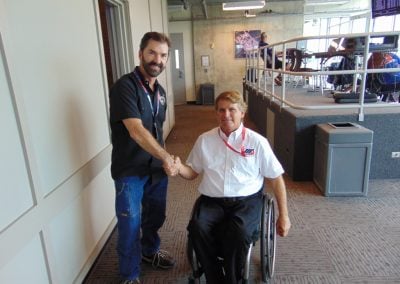














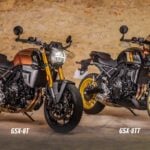
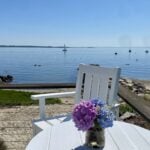
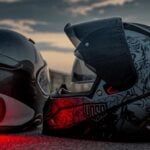
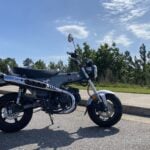
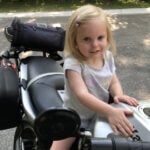

I raced against Wayne in his first season of club racing. It was unfortunately a race for second the whole season. My best finish was third at Riverside.
Wow, very cool to learn, Brian. Thanks for sharing!